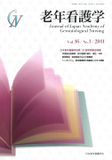Japanese
English
- 販売していません
- Abstract 文献概要
- 参考文献 Reference
抄録
本研究は,東京都区内の1つの特別養護老人ホームで研究者が現場の実践者と協働し,「より良い看取り」の実現に取り組んだ実践研究である.その取り組みに際して,チーム全体に生じた意識的,行動的変化の過程を記述することが本研究の目的である.研究方法は,ロジャーズ─ニューマンの「統一体的かつ変容的なパラダイム」に基づき開発されたミューチュアル・アクションリサーチによる.最初に,職員10〜15人とともに「勉強会」チームを結成し,「勉強会」の逐語録,ケアの反省録,研究者のフィールドノートを解釈学的方法を用いて分析した.
チーム全体の意識的,行動的パターンの変化の過程は,【期待と困惑の交錯】【暗中模索】【看取ることの自覚】【仲間意識の芽生え】【参加者個々の内省】【変容】という特徴的な6つの局面をたどる過程であった.それは,「勉強会」チームの自己革新の過程としてとらえられ,その成果として「より良い看取り」が実現した.初期には大きなゆらぎを生じたにもかかわらず,参加者各自が自らのケアのパターンを認識して変容を遂げ,チームはより高い段階の新しい秩序を創り出したと考察された.本研究の成果は,アクションリサーチを始めようとしている人にも,看取りを積極的に始めようとしている施設においても参考になると思われる.
The purpose of this study is to describe the process of transformation and action of the research group. At the same time, the author is trying to promote quality of “End-of-life Care” in “welfare facilities for the elderly requiring long-term care” by means of “Mutual Action Research”. The study was based on the unitary-transformative paradigm of Rogers-Newman's “Theory of Health”.
From ten to fifteen workers participated in the research group. Data were collected from transcripts of the meetings of the research group, journals written by participants, and field notes written by researcher, and analyzed using the “hermeneutic” method.
In the research, the author found at least six phases of the process of “Mutual Action Research.”
The six phases are as follows: —
Phase 1 “Expectation and Confusion” : The professionals of various departments are coming into the research group with different mind and thought. So, it appears that they have a mixture of expectation and confusion.
Phase 2 “Groping in the Dark” : An unitary partnership is not yet established. They try to grope towards something in utter Chaos.
Phase 3 “Self-consciousness” : The research group overcomes the chaos. Participants begin to think about promoting “End-of-Life Care.”
Phase 4 “Germ of Group Feeling” : An unitary partnership is established.
Phase 5 “Self-reflection” : All members of the research group and individuals come to a recognition of the pattern of “End-of-Life Care.”
Phase 6 “Transformation” : Transformation is accomplished, and “End-of-Life Care” is realized.
The author concludes after due consideration that the pattern of “End-of-Life Care” in the research group has transformed to a higher level, and that the study will be put into practice for promoting “End-of-life Care” in the other welfare facilities for the elderly requiring long-term care.
Copyright © 2011, Japan Academy of Gerontological Nursing All rights reserved.


